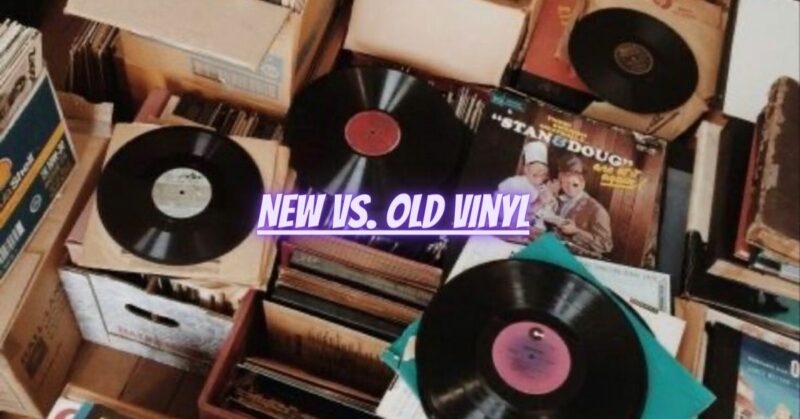When building a vinyl record collection, music enthusiasts often face the decision of choosing between new or old vinyl pressings. Each option has its own advantages and considerations to take into account. In this article, we will explore the pros and cons of new and old vinyl records, helping collectors make informed decisions about their vinyl purchases.
New Vinyl: New vinyl refers to records that have been recently manufactured or reissued. Here are some key points to consider:
- Quality Control: New vinyl pressings often undergo rigorous quality control processes, resulting in consistent sound quality and improved manufacturing techniques. They are less likely to have defects, such as warping or excessive surface noise, compared to older records.
- Availability: New vinyl releases cover a wide range of music genres, including contemporary artists, reissues of classic albums, and special editions. They provide access to recent releases that may not be available or easily accessible in older vinyl formats.
- Sound Quality: New vinyl pressings generally offer high-fidelity sound and can often be remastered for enhanced audio quality. They may incorporate modern mastering techniques and technologies to provide a crisp and dynamic listening experience.
- Packaging and Extras: New vinyl releases often feature updated artwork, additional liner notes, and sometimes bonus tracks or exclusive content. They offer an opportunity to appreciate the album in a fresh presentation with additional value for collectors.
Old Vinyl: Old vinyl refers to original pressings or older records from previous decades. Here are some considerations when collecting old vinyl:
- Vintage Appeal: Old vinyl records have a nostalgic charm and can provide an authentic experience for collectors seeking the original format of their favorite albums. They possess a unique aesthetic and can be valuable collector’s items, particularly for rare or out-of-print releases.
- Sound Character: Some collectors argue that older vinyl pressings possess a distinct sound character due to the production methods and mastering techniques employed at the time. This can result in warmer tones or specific sonic characteristics that appeal to vinyl purists.
- Rarity and Collectibility: Original pressings from certain eras or specific releases can be highly sought-after and considered valuable collector’s items. Owning an original pressing can add historical significance and a sense of uniqueness to a vinyl collection.
- Condition Concerns: Older vinyl records may have more wear and tear due to previous ownership, improper storage, or age-related deterioration. Scratches, surface noise, or warping can be common with older records, potentially affecting the sound quality and playability.
Conclusion: When deciding between new and old vinyl records, it ultimately comes down to personal preferences, budget, and collecting goals. New vinyl offers consistent quality, access to contemporary music, and enhanced sound quality, while old vinyl provides vintage appeal, collectibility, and potential rarity. Consider the availability, condition, sound character, and packaging extras when making your choices. A well-rounded vinyl collection may include a mix of both new and old records, allowing you to appreciate a wide range of music in different formats and eras. Embrace the diverse world of vinyl and enjoy the unique experience it offers, regardless of whether your collection leans towards new or old pressings.


